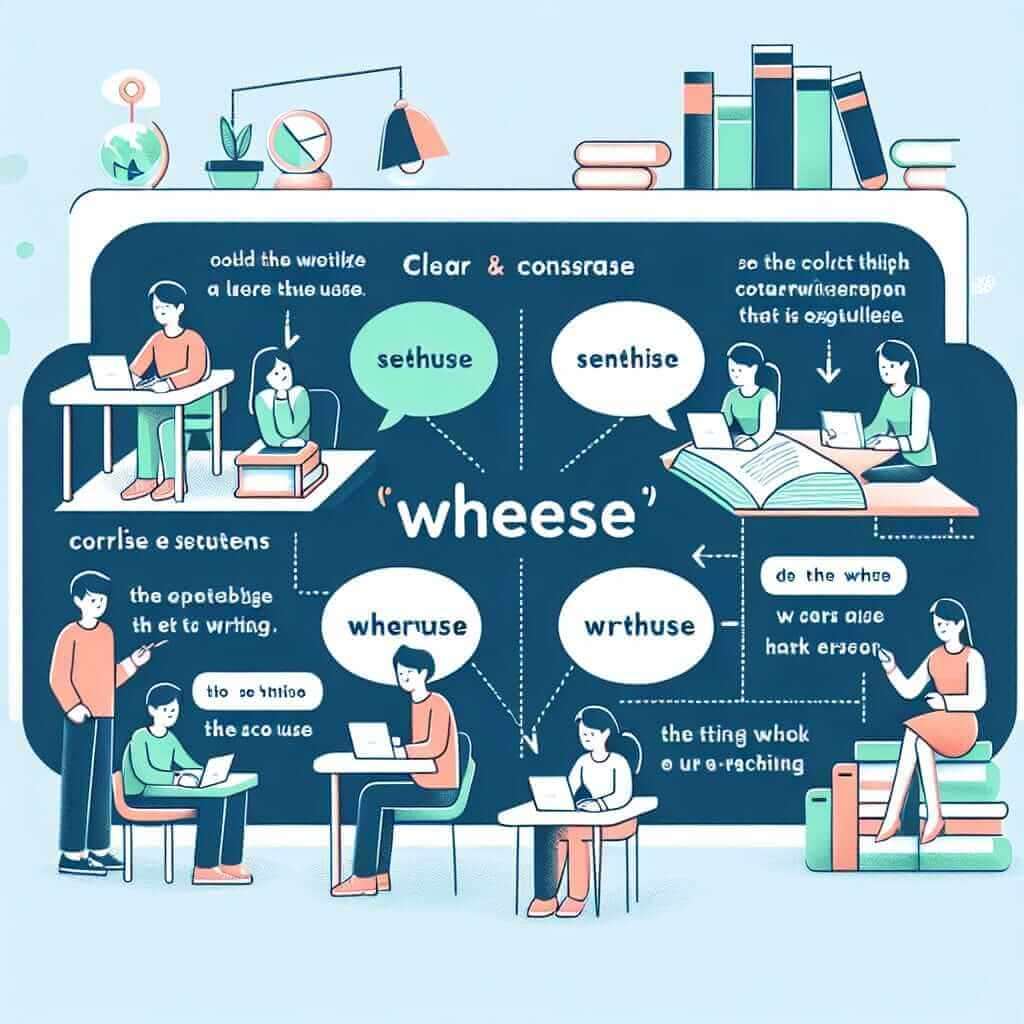“Whereas” is a conjunction that signifies a contrast or comparison between two things. Mastering its use can significantly enhance your IELTS writing score, particularly in Task 1 and Task 2 essays where you’re often required to compare and contrast information.
Let’s look at a few examples of how “whereas” can be used in an IELTS context:
Example 1 (Task 1):
- The unemployment rate in country A remained stable at 4%, whereas country B saw a significant increase from 3% to 6%.
- In this sentence, “whereas” highlights the contrasting unemployment trends between two countries.
Example 2 (Task 2):
- Some people believe that technology enhances our lives, whereas others argue that it leads to social isolation.
- Here, “whereas” presents two opposing viewpoints about technology’s impact.
Example 3 (Task 2):
- While city life offers convenience and excitement, rural living provides peace and quiet, whereas suburban areas often strive to combine aspects of both.
- This sentence utilizes both “while” and “whereas” to illustrate the distinct characteristics of different living environments.
Understanding “Whereas”
“Whereas” is used to introduce a clause that presents contrasting information to the main clause. It emphasizes the difference between two things being discussed. Using “whereas” effectively demonstrates your ability to analyze and compare information, a crucial skill for achieving a high IELTS score.
Using “Whereas” in IELTS Writing
Formula and Grammatical Points
Main clause + , + whereas + contrasting clause.
Note:
- A comma is typically used before “whereas.”
- The clauses connected by “whereas” should be parallel in structure. This means using similar grammatical structures in both clauses.
- While “whereas” can appear at the beginning of a sentence, it’s more common to find it after the main clause.
Applying “Whereas” in IELTS Writing
Task 1:
- Line graphs: “Whereas” can be used to compare trends over time.
- Example: The consumption of coffee steadily increased between 1990 and 2010, whereas tea consumption showed a gradual decline.
- Bar charts: Use “whereas” to compare different categories.
- Example: A significantly higher percentage of men preferred watching action movies, whereas romance movies were more popular among women.
- Pie charts: Employ “whereas” to highlight contrasting proportions.
- Example: The majority of the budget was allocated to education, whereas only a small fraction was dedicated to healthcare.
Task 2:
- Presenting contrasting opinions: Use “whereas” to introduce opposing viewpoints in your essay.
- Example: Proponents of globalization argue that it fosters economic growth, whereas critics contend that it widens the gap between the rich and poor.
- Comparing solutions or approaches: Use “whereas” to discuss the differences between proposed solutions.
- Example: Implementing stricter environmental regulations can help combat pollution, whereas promoting sustainable consumption habits encourages individual responsibility.

Achieving a Higher Score
Using “whereas” effectively showcases your ability to:
- Organize information logically: It helps you present contrasting ideas clearly.
- Use a range of grammatical structures: Demonstrates your command of complex sentences.
- Enhance the clarity and flow of your writing: “Whereas” acts as a cohesive device, making your writing smoother and easier to understand.
Common Mistakes to Avoid
- Incorrect punctuation: Remember to use a comma before “whereas.”
- Lack of parallelism: Ensure the clauses connected by “whereas” are grammatically similar.
- Incorrect: The study emphasized practical skills, whereas theoretical knowledge was considered less important by the researchers.
- Correct: The study emphasized practical skills, whereas the researchers considered theoretical knowledge less important.
- Using “whereas” when another conjunction is more suitable: Don’t overuse “whereas.” Other conjunctions like “while,” “although,” or “however” might be more appropriate depending on the context.
Conclusion
Mastering the use of “whereas” can be a valuable asset for your IELTS writing. By understanding its meaning, usage, and common pitfalls, you can confidently incorporate it into your essays and boost your chances of achieving a high band score. Keep practicing, and soon you’ll be using “whereas” with ease and precision. Remember to explore other conjunctions and transition words to further enhance your writing skills and learn how to effectively use them in different contexts within the IELTS exam.